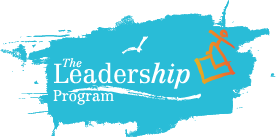
Can the Right Teambuilding Unify Your School?
We hear it all the time, and for good reason—effective team building is an essential part of successful professional development for teachers and team success.
Because what we know to be true is that schools and youth-serving organizations have the unique opportunity to be places that inspire and ignite our young people, where teacher impact on student achievement cannot be overstated. Our leaders have tremendous opportunities to help our youth imagine and explore bright futures and paths toward personal and professional achievement. And a team that is cohesive and working towards a common purpose has a better chance of success than a team that doesn’t invest in professional development.
The daily constraints and challenges that our young people face can sometimes make it difficult for them to even make it into our doors. And the daily constraints and challenges that our leaders face can make it difficult for them to prioritize professional development at all, much less something as “frivolous” as a team building activity.
But our experience at The Leadership Program, working with countless young people, educators, and communities in New York City and all around the country, has taught us that team building, when done well, is anything but frivolous.
When taken seriously, effective team building games can literally change the entire culture of a school or organization, making it a place where adult leaders and youth alike feel seen, heard, and cared for. A safe space where everyone who enters knows that they matter. And if true learning and growth are to occur, these essential elements must be present.
Team building exercises, like any good professional development, doesn’t have to be something that happens only at the kick-off to a new school year, or a holiday celebration. It can, and should, be a daily intentional practice.
Here is a starter 1-2-3 for incorporating a team building mindset into your building:
1. Remember the “Why”:
Why did you get into this work to begin with? Why did your staff? What’s your school or organization’s mission or mantra? How often do you talk about that, among staff and with students?
A common “why” keeps everyone moving forward in the same direction, and simply saying it aloud, during a morning announcement or on an email signature, can remind people of the forest when they feel lost within the trees.
2. See the People Before the Tasks:
How often do we dive right into what needs to get done, because there is always so much to get done, before even stopping to acknowledge the human being on the receiving end of our task-tornado? Whether dealing with staff or students, people want to feel like… well, people.
Sometimes effective team building starts simply with remembering to see a person standing in front of you, because when people feel seen by another, barriers are broken down. You don’t need to climb a rock wall or try to break out of an escape room to build this kind of human connection. Sometimes you just need to start with “hi.”
3. Take Time:
None of us has enough time. But if you take time, you make time. Meaning—if you take time now to stop and listen to the answer of a staff member when you ask the question “How Are You?”, you just might open up their willingness to help you with a task or project later. If you take time now to explain to a new employee about a policy or a specific software you use, you might just open up time later for them to contribute to the whole organization.
If you take the time now to have a quick morning huddle where you share with your staff the priorities of the week or the concerns of the funding/governing entity, you just might eliminate time spent later on questions or resentments. Taking time makes time; I’ve seen that to be true over and over again.
When you invest in your staff, you are investing in your youth, opening paths towards greater achievement and well-being. And with that kind of mindset, everyone wins.



Comments [0]
Click here to read/write comments